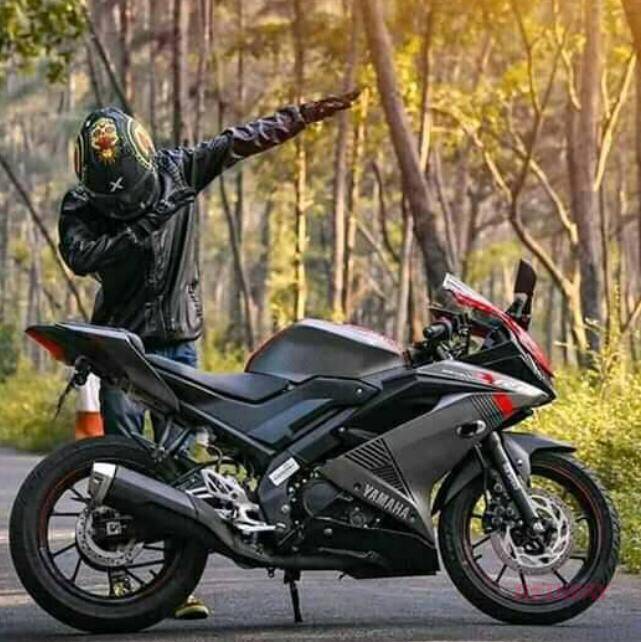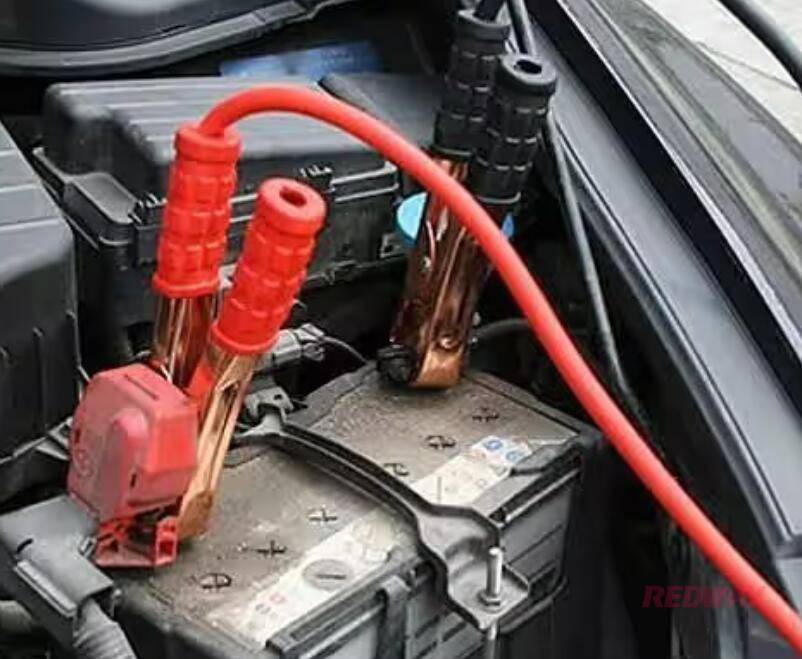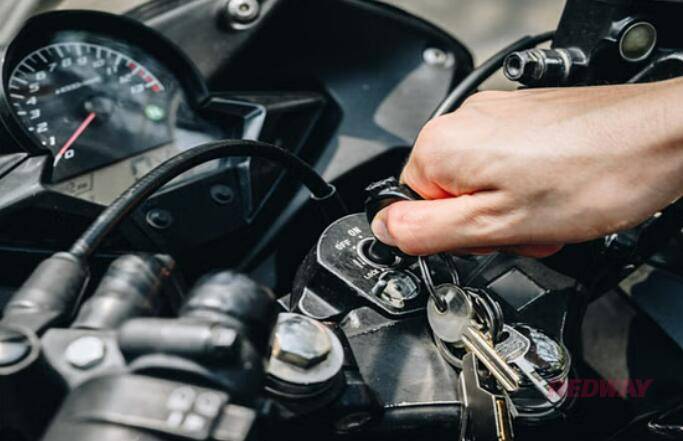If the rider’s battery is discharged on the side of the road, he may find himself having to start the motorcycle’s engine in several ways, including pushing/bumping, using a motorcycle jump starter, or starting a car jump starter.
Often people wonder if you can jump-start a motorcycle with a car battery. After all, both motorcycles and cars use 12V electrical systems, right? Well, not necessarily..

Discharged Motorcycle Battery
When changing the battery on a motorcycle or car, the last thing a rider/driver wants is to hear the dreaded “click” (or “clicks”).
When that happens to a motorcycle rider, one can try several ways to start the engine, including:
- push/bump start,
- using a jump starter,
- using jumper cables and another motorcycle,
- using jumper cables and a car.
Most riders are probably familiar with the first three methods, but the final one, jump-starting a motorcycle using a car and car battery, tends to confuse many riders, leaving them wondering if such a method will damage their motorcycle.
Why Motorcycle Battery Gets Discharged
There are several factors that can cause motorcycle batteries to lose charge, such as high parasitic drain or leaving the lights on.
Another potential issue may be with the alternator/stator generator. As a battery ages, it gradually loses its ability to store and release charge effectively. However, if it can still start the engine, it should be capable of powering the onboard electronics when paired with a functioning alternator/stator generator.
So even if the battery is not completely drained, jumpstarting can still allow the engine and electronics to continue running as long as the alternator/stator generator is in working order.
On the other hand, if both the battery and alternator/stator generator are not functioning properly and require jumpstarting, once the external power source is removed, the engine will likely shut off. In summary, jumpstarting a motorcycle only works when the battery is nearly dead but the alternator/stator generator is functional.
Jump Starting A Motorcycle With A Car Battery
Is it possible to jump-start a motorcycle with a car battery when all other options are unavailable?
Yes, it can.
Is it a safe way of starting a motorcycle?
No, it is not.
This is why… Both motorcycles and cars have 12V electrical systems, at least theoretically. In real life, voltage is determined by the state of the battery, how full it is, whether the engine is running, and so on. The voltages of both electrical systems vary between 12V (voltage of almost discharged lead-acid batteries) and 13.7-14.7V (charging voltage of the alternator, when the battery is fully charged).
So, what is the problem?
When connecting a 12V battery to a motorcycle starter, the necessary current (in Amps) will be drawn to start the engine. This remains true for both a 10Ah and 70Ah battery as their internal resistances are much lower than that of the starter.
However, if a fully charged car battery (e.g. 70Ah) is connected to a discharged motorcycle battery (e.g. 10Ah), there may be an initial large current flow, exceeding the recommended charging rate for lead-acid batteries (typically 0.1C to 0.15C).
If the car’s engine is running and its alternator is keeping the voltage high, this initial charge may permanently damage the motorcycle battery. Is there any risk to motorcycle electronics in this situation?
Generally, no – but if the car’s engine is running, there may be a potential for high voltage or voltage spikes which could harm the electronics. Modern cars typically have voltage charge controllers that help regulate and smooth out the voltage from the battery, reducing the likelihood of spikes – but why take any chances…
How To Crank The Motorcycle With A Car Battery
Again, this should be done only if other methods are unavailable. Connect the red (positive) terminal of the car battery to the red terminal of the motorcycle battery using jumper cables.

Carefully link the negative terminal of the car battery to an exposed metal component of the motorcycle – this indirect connection provides added safeguard for the motorcycle’s battery.
When joining the two vehicles, allow the car’s battery to replenish the motorcycle’s battery for a brief period of 30-60 seconds – this will boost the voltage of the motorcycle’s battery, allowing its alternator or stator generator to recharge it.
Start the motorcycle engine and detach the cables in reverse order than when they were connected.
If you encounter difficulty starting or if the engine stalls as soon as you remove the black cable, extend the charging time by another 30-60 seconds.
Attempt to start the engine once again.
Next, regardless of whether or not you were able to successfully crank it, disconnect the cables and give some time for both batteries to regain their strength. Then, start up the car and let it run for a few minutes to ensure its battery is fully recharged.

Feel free to ride the bike for at least 30-60 minutes after the cranking is successful, and then check the battery’s voltage and check if the battery is strong enough to crank the engine – of course, turn off the engine when you return home or to a workshop.
If the cranking was unsuccessful, and especially if the engine shuts off when the black jumper cable is removed, you should take the bike to the workshop to have the battery, alternator/stator generator, charging electronics, and the rest of the bike’s electrical system examined.
Conclusion
It is possible to use a car engine to crank a motorcycle, but there are potential risks involved. Many motorcycle manufacturers, especially those of motorcycle batteries, advise against this practice. Doing so can potentially void the warranty on the battery and raise questions about the motorcycle’s electronics if any issues arise after cranking.
The author of this article has personally used car batteries to crank motorcycles multiple times without any problems, but it should be noted that each individual takes on their own responsibility when doing so.


